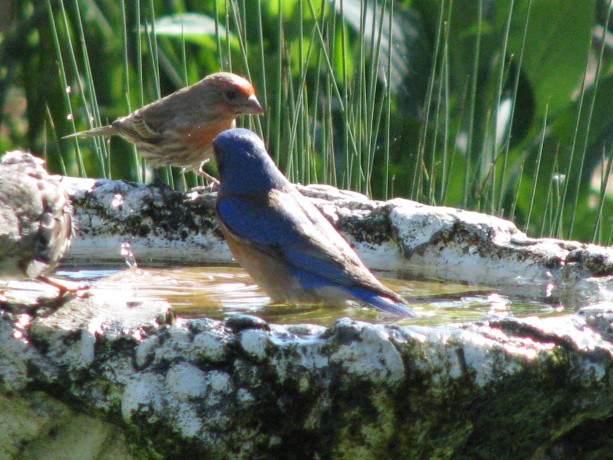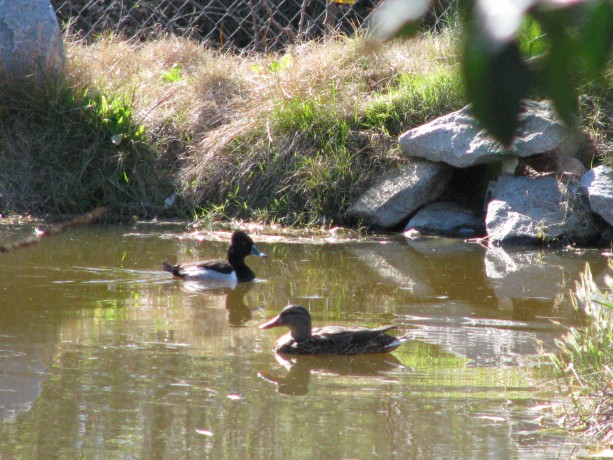Why Finches Turn Red, and Other Interesting Animal Dating Facts

Spring is half-way through and many animals have already had their first batch of young; some are working on their second. Perhaps you noticed when some of the house finches turned a bright shade of red? In fact, many male animals look much differently than the females, becoming more brightly colored, larger, darker, or grow larger horns or antlers. This phenomena is called sexual dimorphism. This is a complicated topic when you begin to analyze all the different forms and shapes boys and girls of the animal kingdom take in order to keep their gene pool going. However I’m going to simplify it because it is pretty darn interesting.
Consider an animal; lets take a house finch. Their lives are spent finding food, finding a mate, finding lots more food for themselves and their young, and surviving predation, accidents and weather. There isn’t much time for playing around. The dawn chorus is the birds calling out that they survived another 24 hours and where is everyone else?
Consider animal calories as money. Finding food and surviving costs a lot of money/calories. For a male house finch to impress a female, they want to make sure they convey the message that they are better at finding food and more macho than the other males. This trait is essentially true for all polygamous (don’t mate for life) animals. (Let that be a lesson learned, girls!) In flocks or packs or herds that are open and often on the move, guys show their wealth through coloration, size and ornamentation. It takes more calories for the finch to turn colors, just like it takes lots of calories for peacocks to be larger and gaudier than females, or cape buffalo to be darker, or ungulates to grow really large horns. But why a brighter shade of red? The bright colors and larger size (in part) show that these males aren’t afraid of attracting the attention of predators because they are strong and macho enough to survive an attack. The darker the color, the more calories, the more fit and healthy, and thus the better food-gatherer and protector for the brood. The guys are saying, “Bring it on!”

Females of these sexual dimorphic species are given a hard rap by being called dull-colored. What they are, of course, are smartly colored. They are camouflage to fit in with the area in which they will be nesting. They are thinking ahead. They don’t go in for dramatic courtship dances because they don’t have to: the guys are desperate for a healthy female to be attracted to them so that they can pass on their genes. It is a buyer’s market. Females also need to store calories because creating eggs or gestating and giving birth then feeding/producing milk and raising kids to maturity is very expensive. Isn’t it, though?
In closed herds or with animals who are monogamous (crows, for instance), the males don’t need to spend money on dates, so dressing up is just considered a waste of money/calories. (Does that sound familiar?).
As I mentioned, there are many variations on the whole sex thing, such as species where the females are larger than the males. Many spiders have this trait and it is supposed that in species who are solitary the females need to be large to be seen by the males, or to have the strength to carry young with them and feed them, and all the males need to spend calories on is, well, you know. Slam, bam, good-bye Ma’am, and all that. Until, of course, he is eaten by the female Black Widow spider. Or is murdered by the female worker bees. So it goes.
When you look out the window and see a brightly colored finch, or a large dark western fence lizard doing push-ups on a warm rock, or see deer with tremendous antlers (deer’s antler are shed every year, by the way. Antelopes have horns which are a one-time shot), you can appreciate how expensive it is for that male to put on such a show to attract a mate.
That pretty much is why we overspend on dates, too.
